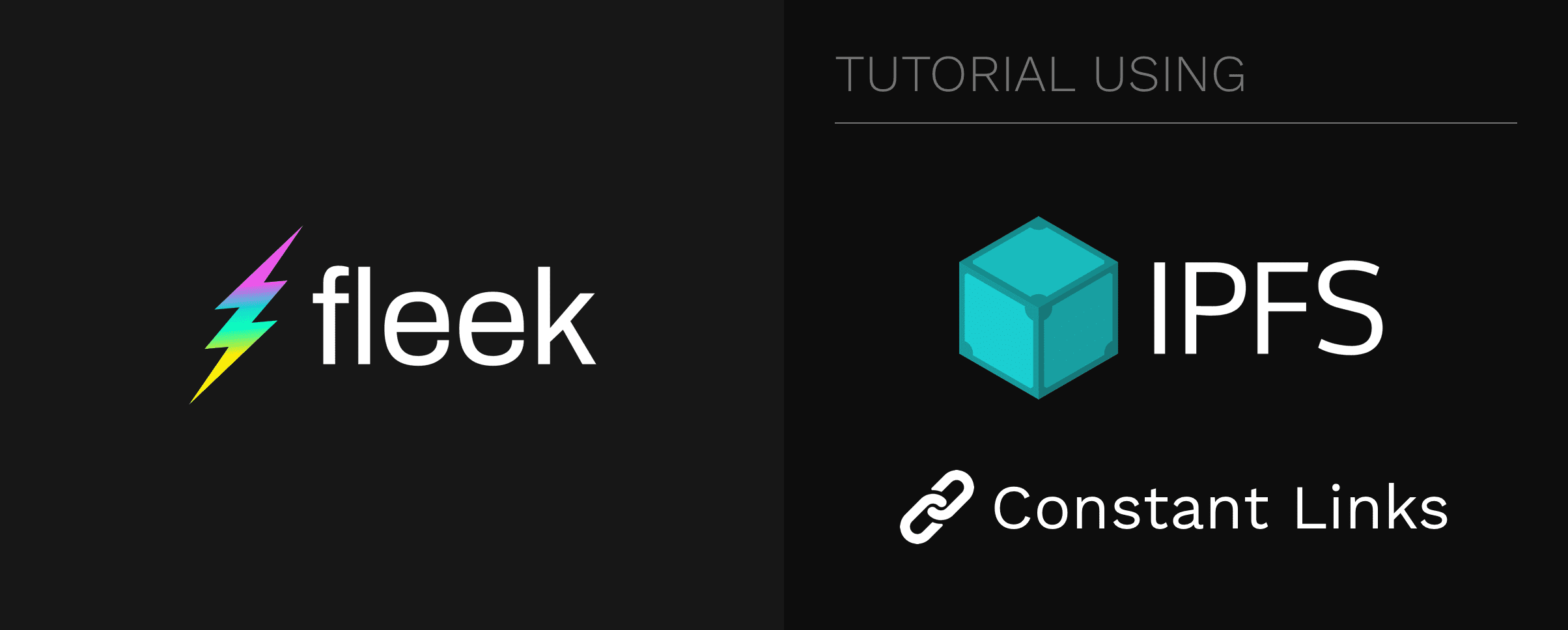
We tend to take constant links for granted when navigating the web. For example, if I invited you to visit Fleek’s homepage, I’d give you the following link: https://fleek.co. This link never changes, that is why I can share it with you.
In this article, we will explain how constant links, such as the one above, are achieved in IPFS.
Constant vs Changing Links

Content in IPFS is addressed by its content in the form of a hash. This is of great importance for the hosting on the IPFS site.
For example, here is a current hash of the Fleek homepage: QmZQV5YXKakh7aKqSk3MVARNu8eaxws9KNc6EeStQTYt5w.
What would happen if we made an update, such as fixing a typo or adding more content? The hash would be different!
For example, it could become: QmRW3V9znzFW9M5FYbitSEvd5dQrPWGvPvgQD6LM22Tv8e.
If I wanted to share the Fleek homepage with you, it would be impossible to point to a single link because the hash would change anytime I updated the site. That is because we want an constant link to share the site, even though the content of the website itself is changing.
This constant vs changing distinction is comparable to the address of a house. If I invited you to a party at my house, I would share with you an constant link in the form of the address of the house. However, the content of the house is changing, because we do not know which guest has arrived yet!
So how to we create constant link to content hosted on IPFS, if a new hash is created everytime an update occurs?
There are three main solutions to this problem.
1. IPNS: Constant Hashes
IPNS links use public-key crytography to produce a hash that links to an IPFS hash.
They can look just like IPFS hashes: QmSrPmbaUKA3ZodhzPWZnpFgcPMFWF4QsxXbkWfEptTBJd.
They are hashes of a public key. The owner of that public key can sign a piece of information containing the IPNS hash linking to the most recent version of a website.
That means that if I shared the IPNS hash, I could direct users to the same website and it would still allow me to make updates.
The drawback of this solution, however, is that IPNS hashes are not human-readable.
That’s where the second solution comes in.
2. DNSLink: Linking DNS and IPFS
DnsLink acts as a sort of bridge between a traditional domain name and the IPFS ecosystem.
Simply put, it stores a link to an IPFS hash in the DNS records of a domain.
IPFS searches for a DNSLink when a provided IPNS hash is not a valid hash or simply not found. In that case, IPFS will search for the DNS record associated with the domain to see if it contains a DNSLink record.
This is a solution Fleek uses profusely. For example, here’s the fleek.co through the DNSLink https://ipfs.io/ipns/fleek.co/
This solution, however, relies on centralized DNS servers so it does not fully realize the vision of a fully decentralized web intended by IPFS.
That’s where the last solution comes in.
3. ENS: The Blockchain Solution
We had IPNS, which was decentralized, but not human-readable. We had DNSLink, which was human-readable, but not fully decentralized.
ENS is both decentralized AND human-readable.
That’s because ENS, short for Ethereum Name Service, is a decentralized name record living on the Ethereum blockchain, the most popular smart contract platform. There we can associate a human-readable link to an IPFS hash.
These domains look just like normal domains, except that they end in .eth instead of .com.
ENS domains are very cool, but also very new. To access such sites, you will need a browser such as Brave or the Metamask Extension.
Of course, at Fleek, we fully support ENS for ultimate decentralization!
Here’s our site on ENS: fleekhq.eth/!
Set a Site on Fleek!
Fleek harnesses all theses technologies in an easy-to-use manner. Host your site on Fleek and join the new decentralized web!